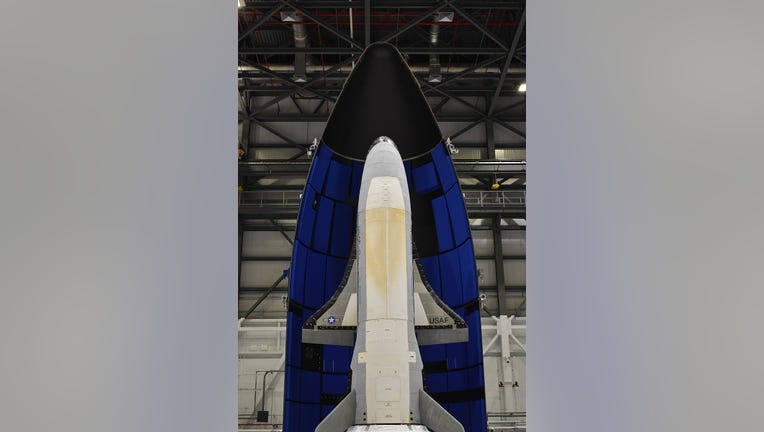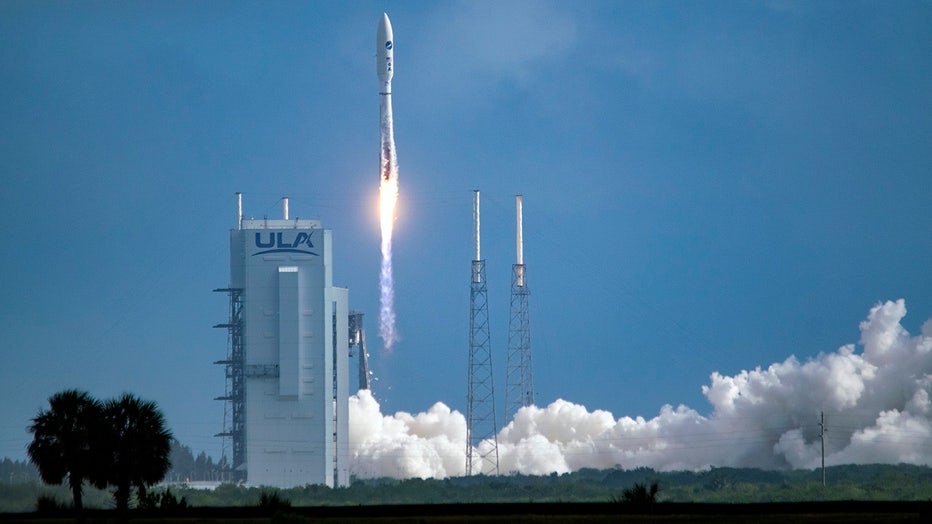Secretive robot spaceplane breaks own record: 781 days in space

The X-37B, seen as it is encapsulated in its launch fairing. (DoD photo)
CAPE CANAVERAL, Fla. - The military’s classified X-37B mini-shuttle has once again broken its own record for longest space mission, but there’s still very little word about just what it’s been spending all that time doing, or when it may come home.
Back on May 17, 2020, an otherwise unremarkable Atlas V rocket blasted off from Cape Canaveral. It looked nearly identical to many other such rockets that regularly fly from the Cape, but this one had the stubby delta-winged craft safely concealed underneath its protective payload fairing.
The uncrewed spacecraft rocketed to an orbit roughly 250 miles high, where it has remained for 781 days as of Thursday, breaking the record of nearly 780 days set by its twin craft on the previous mission.
What is the X-37B?
The X-37B is a reusable robotic spaceplane that flies classified missions for the military. The Space Force has two identical craft that generally take turns flying longer and longer trips to space.
At just 30 feet long, the craft is similar to but much smaller than the space shuttle and features a small payload bay that can deploy satellites or expose experiments to the vacuum of space.

File: An X-37B lands at NASA's Kennedy Space Center's Shuttle Landing Facility in Florida on May 7, 2017. (U.S. Air Force courtesy photo)
Since 2010, there have been six flights by the two craft – the shortest lasting 224 days. By comparison, the crewed space shuttle could only spend roughly two weeks in space.
The spaceplanes land autonomously, most recently at the old space shuttle runway at Kennedy Space Center, not far from their base of operations in one of the old shuttle hangars.
The OTV-6 mission

File: The OTV-6 mission launches in May, 2020 (Chris Boex / FOX)
The Space Force released a few more details than normal about the current flight, which is designated OTV-6. The experiments – at least the ones disclosed publicly – include two for NASA and one sponsored by the Naval Research Laboratory to study the possibility of transforming solar power into radio frequency microwave energy, which could be transmitted to the ground.
A few days after its launch, the spaceplane deployed FalconSat-8, a minisatellite for the U.S. Air Force Academy testing, among other things, a new type of thruster and new antenna technologies.
It’s not yet clear when the OTV-6 mission will end; historically, the military has only announced the end of each mission as the craft were in the process of landing.

